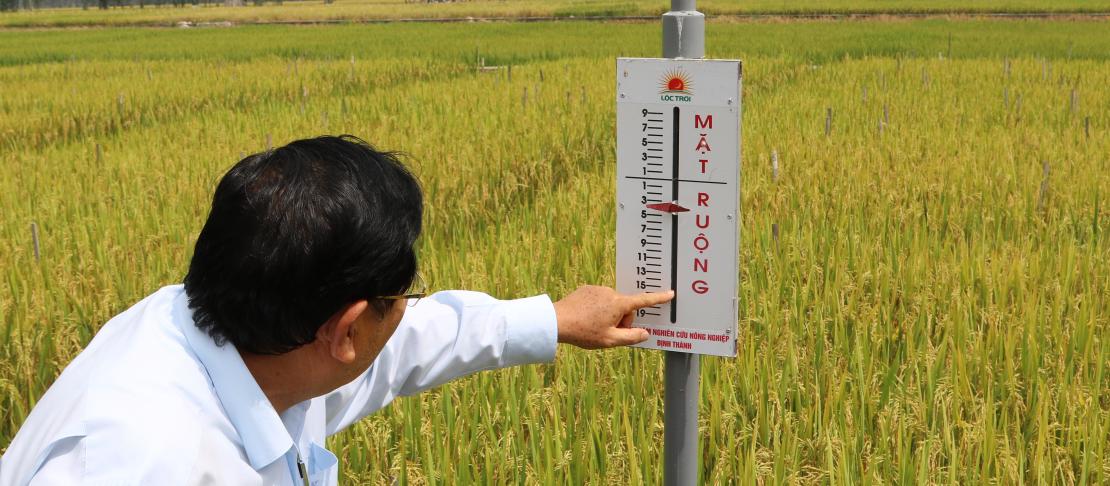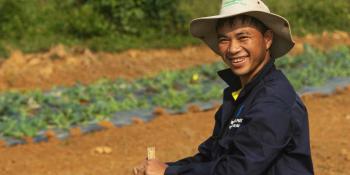How can we turn climate-smart agriculture to a good investment?

Presenting incentive mechanisms for farmers and other stakeholders in climate-smart agriculture interventions and ironing out problems in policies would help achieve scaling up and out climate-smart practices.
During the past years, several factors proved to be successful to make climate-smart agriculture (CSA) effective in addressing climate change impacts. However, due to some barriers and inefficiencies in the current implementation scheme, scaling up and out of these CSA packages are still not fully realized. If more farmers and private and research institutions invest time, effort, and resources on CSA, these interventions would be successfully scaled up and out at the local and national levels.
Hence, the CGIAR Research Program on Climate Change, Agriculture and Food Security (CCAFS) sought for insights of representatives from international financial institutions to find out how CSA can be made a lucrative investment for farmers and other stakeholders. According to these experts, while CCAFS efforts in the past years have focused on simultaneously upscaling and outscaling CSA, one seems to be weightier than the other. According to Jayne Curnow, a research program manager at the Australian Centre for International Agricultural Research (ACIAR), CCAFS’ focus should be on scaling out, for it can help establish models which will serve as proof of the effectiveness of CSA interventions in convincing policymakers to support plans of scaling up. The experts added that the success of scaling CSA interventions depend heavily on three things: making sound business propositions to farmers, addressing gaps in policies, and strengthening ties with governments and other stakeholders.
Focusing on farmers
CSA could receive more funds from international funding agencies if it can be proven to be a profitable investment to farmers who devote time, effort, and resources to adopt these technologies.
Convenience and time-saving factors could be the entry point for CSA interventions to be considered profitable by farmers, says Michiko Katagami of the Asian Development Bank. Hence, in encouraging more farmers to invest in CSA, the packages to be introduced in communities should include convenient, time-saving, and labor-saving technologies.
The profitability of the investment is also an important consideration for farmers. Thus, products produced from the CSA systems to be introduced should have a market in the community. Ensuring better turnout and higher quality of products produced in CSA systems would also turn these adaptation and mitigation packages into lucrative investment for farmers.
Establishing insurance systems will help lessen the negative impact of natural calamities on the farmers’ harvest. Meanwhile, improving precautionary measures such as better warning systems for extreme weather conditions will reduce losses incurred by farmers. The reduction of these risks involved in the adoption of these technologies will be effective in encouraging wider CSA adoption.

Fostering partnerships
Improving the relationship with the governments, non-governmental organizations, and private sectors should also be given utmost importance to resolve inefficiencies in the allocation of budget and other resources in implementing CSA activities and interventions.
The roles and mandates of government agencies, research and private institutions involved in CSA implementation should made clear to facilitate matchmaking in of roles and functions in projects and to avoid overlaps resulting to inefficiencies.
According to the Vietnamese Ministry of Agriculture and Rural Development’s Deputy Minister, Dr. Le Quoc Doanh, one key to success in scaling up and out is to go along the government’s direction in planning and implementing interventions instead of involving the government sector later on. This would ease up the lengthy process of eliciting government support for training more farmers and promoting adoption at the provincial and national level.
Katagami added that incentive mechanisms should also be established to encourage the private sector and other stakeholders to actively work with CCAFS. By doing this, CCAFS would be closer to achieving the goal of a multi-sectoral approach to CSA implementation.
Filling in the gaps in policies
When it comes to policy analysis, implementers of the interventions should be able to pinpoint the specific policies that get in the way of the implementation. An assessment of the existing policy frameworks provide a picture of challenges to be addressed and opportunities that should be seized.
Addressing the gaps in the existing policy framework beforehand will hasten the outscaling and upscaling at the provincial and national levels.
Moreover, experts from these financial institutions encouraged researchers and implementers to engage with the policymakers in participatory planning and implementation of the scaling up process and creating plans. They also emphasized the importance of anchoring project plans on existing policy frameworks to avoid further delaying the already lengthy process of scaling interventions.
Read more:
- CCAFS blog: Climate-smart agriculture in Asia: Beyond pilot evaluations and models
- CCAFS blog: Moving closer to achieving climate-smart future for Southeast Asia
- CCAFS blog: A single super-hero or a bundle of them for crop insurance in Asia?
Camille Anne Mendizabal is the junior communications specialist for the World Agroforestry Centre Philippines. She is also a communication consultant with the CCAFS SEA program.



